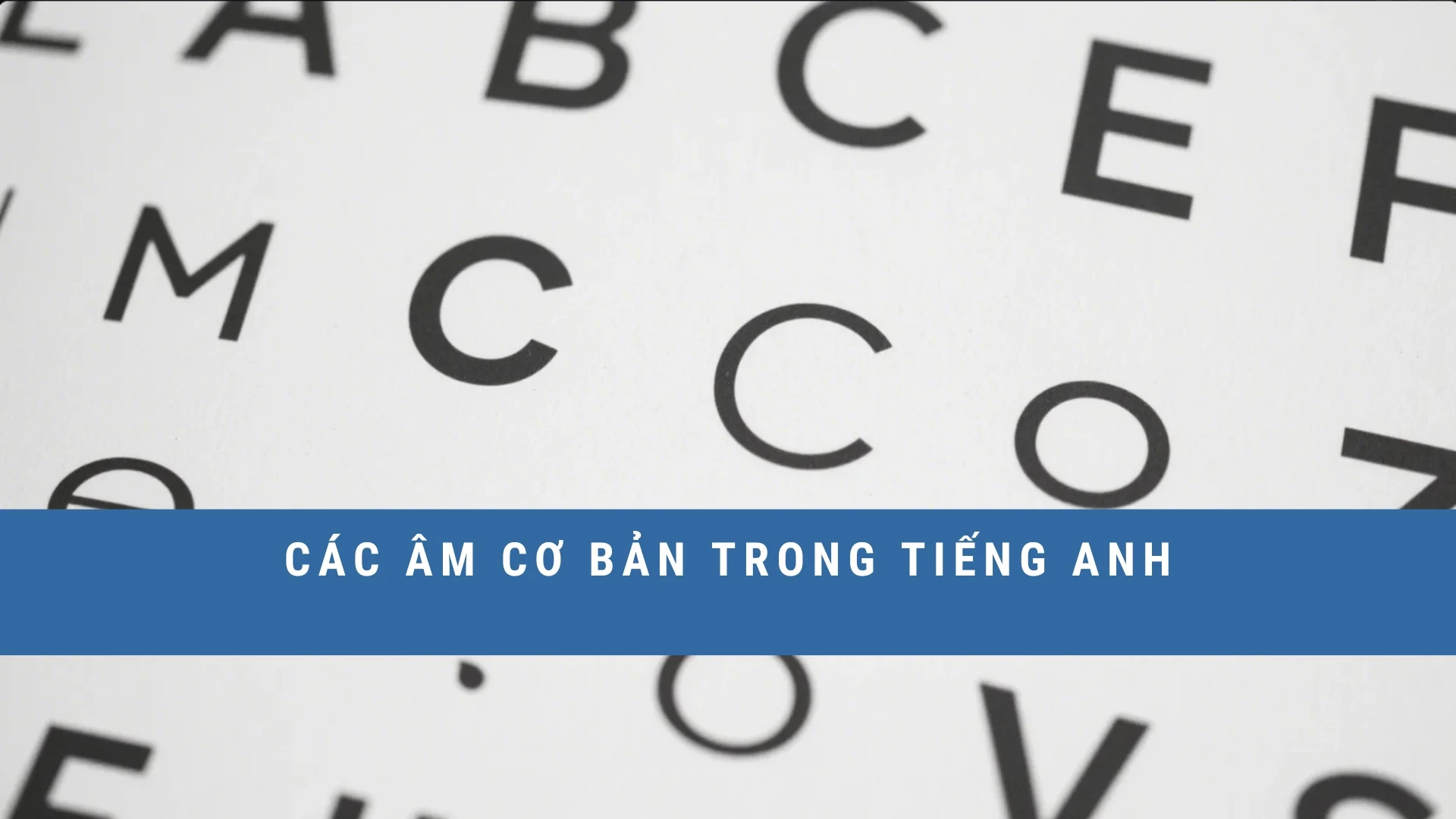Bài viết này tổng hợp 100 từ vựng và cụm từ vựng tiếng Anh quan trọng trong lĩnh vực Quản lý dự án IT. Đây là nguồn tài liệu hữu ích giúp bạn hiểu rõ hơn về thuật ngữ chuyên ngành, nâng cao kỹ năng giao tiếp, đọc hiểu tài liệu, và quản lý dự án IT hiệu quả hơn.
- Project Management – Quản lý Dự án
- Project Lifecycle – Vòng đời Dự án
- Stakeholder Management – Quản lý Cổ đông
- Risk Management – Quản lý Rủi ro
- Scope Creep – Mở rộng Phạm vi
- Project Plan – Kế hoạch Dự án
- Project Charter – Điều lệ Dự án
- Deliverables – Sản phẩm Giao hàng
- Milestones – Cột mốc
- Gantt Chart – Biểu đồ Gantt
- Work Breakdown Structure (WBS) – Cấu trúc Phân chia Công việc
- Critical Path – Đường Phê duyệt
- Budget Management – Quản lý Ngân sách
- Time Management – Quản lý Thời gian
- Resource Allocation – Phân bổ Tài nguyên
- Project Schedule – Lịch trình Dự án
- Project Scope – Phạm vi Dự án
- Change Management – Quản lý Thay đổi
- Issue Tracking – Theo dõi Vấn đề
- Quality Assurance (QA) – Đảm bảo Chất lượng
- Project Kickoff – Khởi động Dự án
- Project Closure – Kết thúc Dự án
- Agile Methodology – Phương pháp Agile
- Scrum – Scrum
- Kanban – Kanban
- Project Sponsor – Nhà tài trợ Dự án
- Project Manager – Quản lý Dự án
- Team Collaboration – Hợp tác Đội ngũ
- Project Objectives – Mục tiêu Dự án
- Performance Metrics – Chỉ số Hiệu suất
- Status Report – Báo cáo Tình trạng
- Project Budget – Ngân sách Dự án
- Project Timeline – Dòng thời gian Dự án
- Task Management – Quản lý Công việc
- Resource Management – Quản lý Tài nguyên
- Project Risk – Rủi ro Dự án
- Dependencies – Phụ thuộc
- Project Baseline – Cơ sở Dự án
- Project Schedule Management – Quản lý Lịch trình Dự án
- Project Goals – Mục tiêu Dự án
- Project Team – Đội ngũ Dự án
- Project Documentation – Tài liệu Dự án
- Project Implementation – Triển khai Dự án
- Budget Forecast – Dự đoán Ngân sách
- Resource Forecasting – Dự đoán Tài nguyên
- Scope Management – Quản lý Phạm vi
- Project Stakeholders – Các bên liên quan Dự án
- Project Tracking – Theo dõi Dự án
- Project Constraints – Ràng buộc Dự án
- Project Performance – Hiệu suất Dự án
- Risk Assessment – Đánh giá Rủi ro
- Change Request – Yêu cầu Thay đổi
- Resource Capacity – Năng lực Tài nguyên
- Deliverable Acceptance – Chấp nhận Sản phẩm Giao hàng
- Project Review – Đánh giá Dự án
- Communication Plan – Kế hoạch Giao tiếp
- Project Phases – Các giai đoạn Dự án
- Project Backlog – Danh sách Việc cần làm
- Product Backlog – Danh sách Sản phẩm
- Sprint Planning – Lập kế hoạch Sprint
- Daily Stand-up – Cuộc họp Đứng hàng ngày
- Sprint Review – Đánh giá Sprint
- Retrospective – Tổng kết
- Burndown Chart – Biểu đồ Burndown
- Release Plan – Kế hoạch Phát hành
- User Stories – Câu chuyện Người dùng
- Task Assignment – Phân công Công việc
- Project Workflow – Quy trình Dự án
- Project Budgeting – Lập ngân sách Dự án
- Project Scope Definition – Xác định Phạm vi Dự án
- Resource Utilization – Sử dụng Tài nguyên
- Project Management Office (PMO) – Văn phòng Quản lý Dự án
- Project Reporting – Báo cáo Dự án
- Project Prioritization – Ưu tiên Dự án
- Project Execution – Thực hiện Dự án
- Project Analysis – Phân tích Dự án
- Project Integration – Tích hợp Dự án
- Project Dependencies Management – Quản lý Phụ thuộc Dự án
- Project Budget Control – Kiểm soát Ngân sách Dự án
- Project Performance Evaluation – Đánh giá Hiệu suất Dự án
- Project Risk Control – Kiểm soát Rủi ro Dự án
- Resource Scheduling – Lên lịch Tài nguyên
- Project Issue Management – Quản lý Vấn đề Dự án
- Project Communication – Giao tiếp Dự án
- Project Change Control – Kiểm soát Thay đổi Dự án
- Project Constraints Management – Quản lý Ràng buộc Dự án
- Project Budget Management – Quản lý Ngân sách Dự án
- Project Deliverable Tracking – Theo dõi Sản phẩm Giao hàng Dự án
- Project Scope Control – Kiểm soát Phạm vi Dự án
- Project Goal Setting – Đặt mục tiêu Dự án
- Project Documentation Management – Quản lý Tài liệu Dự án
- Project Resource Planning – Lập kế hoạch Tài nguyên Dự án
- Project Quality Control – Kiểm soát Chất lượng Dự án
- Project Risk Mitigation – Giảm thiểu Rủi ro Dự án
- Project Deliverable Definition – Xác định Sản phẩm Giao hàng Dự án
- Project Execution Plan – Kế hoạch Thực hiện Dự án
- Project Stakeholder Communication – Giao tiếp với Các bên liên quan Dự án
- Project Status Update – Cập nhật Tình trạng Dự án
- Project Change Management – Quản lý Thay đổi Dự án
- Project Success Criteria – Tiêu chí Thành công Dự án
Bài viết sử dụng thuật ngữ trên
- Project Management – “Effective project management is crucial for delivering projects on time and within budget.”
- Project Lifecycle – “Understanding the project lifecycle helps ensure that all phases are completed successfully.”
- Stakeholder Management – “Stakeholder management involves engaging with all parties affected by the project to gather their input and keep them informed.”
- Risk Management – “Risk management strategies help identify potential issues and mitigate their impact on the project.”
- Scope Creep – “Scope creep can lead to increased costs and delays, so it’s important to manage changes carefully.”
- Project Plan – “A detailed project plan outlines the tasks, timelines, and resources needed for successful project completion.”
- Project Charter – “The project charter defines the objectives, scope, and stakeholders of the project.”
- Deliverables – “Each phase of the project has specific deliverables that must be completed and approved.”
- Milestones – “Milestones are key points in the project timeline that mark the completion of significant tasks.”
- Gantt Chart – “A Gantt chart visually represents the project schedule, showing tasks and their deadlines.”
- Work Breakdown Structure (WBS) – “The work breakdown structure (WBS) breaks the project into manageable sections to ensure all tasks are covered.”
- Critical Path – “The critical path determines the sequence of tasks that directly affect the project duration.”
- Budget Management – “Budget management ensures that project costs are controlled and expenditures are tracked.”
- Time Management – “Effective time management is essential to keep the project on schedule and meet deadlines.”
- Resource Allocation – “Resource allocation involves assigning the right people and materials to each task in the project.”
- Project Schedule – “The project schedule outlines when each task will be started and completed.”
- Project Scope – “Defining the project scope helps avoid misunderstandings and ensures all stakeholders are aligned.”
- Change Management – “Change management processes are used to handle adjustments to the project scope or objectives.”
- Issue Tracking – “Issue tracking systems help monitor and resolve problems that arise during the project.”
- Quality Assurance (QA) – “Quality assurance (QA) ensures that the project’s deliverables meet the required standards and specifications.”
- Project Kickoff – “The project kickoff meeting marks the official start of the project and sets expectations for the team.”
- Project Closure – “Project closure involves finalizing all tasks, delivering the final product, and reviewing the project’s success.”
- Agile Methodology – “The Agile methodology promotes iterative development and frequent reassessment of project goals.”
- Scrum – “Scrum is a framework within Agile that uses sprints to manage project tasks and deliverables.”
- Kanban – “Kanban is a visual method for managing work by using boards and cards to track task progress.”
- Project Sponsor – “The project sponsor provides the necessary resources and support to ensure project success.”
- Project Manager – “The project manager is responsible for planning, executing, and closing the project.”
- Team Collaboration – “Team collaboration tools facilitate communication and cooperation among project team members.”
- Project Objectives – “Clear project objectives help guide the team and ensure everyone is working towards the same goals.”
- Performance Metrics – “Performance metrics are used to measure the progress and success of the project.”
- Status Report – “A status report provides updates on the project’s progress, issues, and upcoming tasks.”
- Project Budget – “The project budget outlines the financial resources required and helps control costs.”
- Project Timeline – “The project timeline details the start and end dates of each phase and task.”
- Task Management – “Task management involves assigning and tracking the completion of individual project tasks.”
- Resource Management – “Resource management ensures that the project has the necessary people, equipment, and materials.”
- Project Risk – “Identifying project risks early helps in developing strategies to mitigate potential problems.”
- Dependencies – “Task dependencies show how tasks are related and which ones need to be completed before others can start.”
- Project Baseline – “The project baseline is the original plan against which project performance is measured.”
- Project Schedule Management – “Project schedule management involves planning and controlling the project timeline.”
- Project Goals – “Setting clear project goals helps define what the project aims to achieve.”
- Project Team – “The project team consists of individuals with specific roles and responsibilities for the project’s success.”
- Project Documentation – “Project documentation includes all records related to the project, such as plans, reports, and changes.”
- Project Implementation – “Project implementation is the phase where the project plan is executed and deliverables are produced.”
- Budget Forecast – “A budget forecast predicts future expenses and helps in planning financial resources.”
- Resource Forecasting – “Resource forecasting involves predicting the resources needed for the project and planning accordingly.”
- Scope Management – “Scope management ensures that all project requirements are defined and controlled throughout the project.”
- Project Stakeholders – “Project stakeholders are individuals or groups with an interest in the project’s outcome.”
- Project Tracking – “Project tracking involves monitoring progress to ensure the project stays on schedule and within budget.”
- Project Constraints – “Project constraints include limitations such as time, cost, and resources that affect project execution.”
- Project Performance – “Project performance is evaluated based on how well the project meets its objectives and criteria.”
- Risk Assessment – “Risk assessment involves identifying and evaluating potential risks to the project’s success.”
- Change Request – “A change request formalizes a request to alter the project scope, schedule, or budget.”
- Resource Capacity – “Resource capacity refers to the maximum amount of work that can be handled by available resources.”
- Deliverable Acceptance – “Deliverable acceptance ensures that the completed work meets the required standards before final approval.”
- Project Review – “A project review assesses the project’s progress and identifies areas for improvement.”
- Communication Plan – “A communication plan outlines how information will be shared among project stakeholders.”
- Project Phases – “Project phases divide the project into distinct stages for better management and control.”
- Project Backlog – “The project backlog lists tasks and requirements that need to be addressed during the project.”
- Product Backlog – “The product backlog contains all the features, enhancements, and fixes required for the product.”
- Sprint Planning – “Sprint planning involves defining tasks and goals for the upcoming sprint in Agile projects.”
- Daily Stand-up – “Daily stand-up meetings help the team discuss progress and any obstacles they are facing.”
- Sprint Review – “The sprint review assesses the work completed during a sprint and gathers feedback from stakeholders.”
- Retrospective – “A retrospective meeting reviews the sprint to discuss what went well and what could be improved.”
- Burndown Chart – “A burndown chart tracks the amount of work remaining versus the time left in the sprint.”
- Release Plan – “A release plan schedules when and how new features or products will be delivered to stakeholders.”
- User Stories – “User stories describe the features or functionalities from the user’s perspective.”
- Task Assignment – “Task assignment involves distributing responsibilities among team members based on their skills and availability.”
- Project Workflow – “Project workflow outlines the sequence of tasks and processes needed to complete the project.”
- Project Budgeting – “Project budgeting involves estimating and controlling costs to stay within the financial plan.”
- Project Scope Definition – “Project scope definition clearly outlines the boundaries and deliverables of the project.”
- Resource Utilization – “Resource utilization measures how effectively resources are being used throughout the project.”
- Project Management Office (PMO) – “The Project Management Office (PMO) provides governance and support for project management practices.”
- Project Reporting – “Project reporting involves creating reports that summarize progress, issues, and performance.”
- Project Prioritization – “Project prioritization helps determine which tasks or projects should be addressed first based on their importance.”
- Project Execution – “Project execution is the phase where plans are put into action to achieve project objectives.”
- Project Analysis – “Project analysis evaluates project performance, risks, and outcomes to improve future projects.”
- Project Integration – “Project integration ensures that all parts of the project work together cohesively.”
- Project Dependencies Management – “Managing project dependencies involves coordinating tasks that rely on each other.”
- Project Budget Control – “Project budget control monitors expenses to ensure the project stays within the approved budget.”
- Project Performance Evaluation – “Project performance evaluation assesses how well the project meets its objectives and delivers value.”
- Project Risk Control – “Project risk control involves implementing measures to minimize the impact of identified risks.”
- Resource Scheduling – “Resource scheduling allocates time and resources to tasks based on project needs.”
- Project Issue Management – “Project issue management tracks and resolves problems that arise during the project.”
- Project Communication – “Project communication ensures that all stakeholders are informed and engaged throughout the project.”
- Project Change Control – “Project change control manages modifications to the project scope, schedule, or budget.”
- Project Constraints Management – “Managing project constraints involves addressing limitations that impact project execution.”
- Project Budget Management – “Project budget management involves tracking and controlling financial resources.”
- Project Deliverable Tracking – “Tracking project deliverables ensures that all outputs are completed and meet the required standards.”
- Project Scope Control – “Project scope control manages changes to the project scope to prevent scope creep.”
- Project Goal Setting – “Setting project goals helps define what the project aims to achieve and guides decision-making.”
- Project Documentation Management – “Project documentation management ensures that all records are organized and accessible.”
- Project Resource Planning – “Project resource planning involves forecasting and allocating resources needed for the project.”
- Project Quality Control – “Project quality control monitors the project’s outputs to ensure they meet quality standards.”
- Project Risk Mitigation – “Risk mitigation strategies reduce the likelihood and impact of potential project risks.”
- Project Deliverable Definition – “Defining project deliverables clarifies what needs to be produced and delivered at each stage.”
- Project Execution Plan – “The project execution plan outlines how the project will be carried out and managed.”
- Project Stakeholder Communication – “Effective project stakeholder communication keeps everyone informed and engaged in the project.”
- Project Status Update – “Regular project status updates provide information on progress, issues, and next steps.”
- Project Change Management – “Project change management ensures that changes are properly assessed, approved, and implemented.”
- Project Success Criteria – “Defining project success criteria helps measure whether the project meets its objectives and delivers value.”
Bài tập
- Effective ________ is crucial for delivering projects on time and within budget.
- Understanding the ________ helps ensure that all phases are completed successfully.
- ________ involves engaging with all parties affected by the project to gather their input and keep them informed.
- ________ strategies help identify potential issues and mitigate their impact on the project.
- ________ can lead to increased costs and delays, so it’s important to manage changes carefully.
- A detailed ________ outlines the tasks, timelines, and resources needed for successful project completion.
- The ________ defines the objectives, scope, and stakeholders of the project.
- Each phase of the project has specific ________ that must be completed and approved.
- ________ are key points in the project timeline that mark the completion of significant tasks.
- A ________ visually represents the project schedule, showing tasks and their deadlines.
- The ________ breaks the project into manageable sections to ensure all tasks are covered.
- The ________ determines the sequence of tasks that directly affect the project duration.
- ________ ensures that project costs are controlled and expenditures are tracked.
- Effective ________ is essential to keep the project on schedule and meet deadlines.
- ________ involves assigning the right people and materials to each task in the project.
- The ________ outlines when each task will be started and completed.
- Defining the ________ helps avoid misunderstandings and ensures all stakeholders are aligned.
- ________ processes are used to handle adjustments to the project scope or objectives.
- ________ systems help monitor and resolve problems that arise during the project.
- ________ ensures that the project’s deliverables meet the required standards and specifications.
- The ________ meeting marks the official start of the project and sets expectations for the team.
- ________ involves finalizing all tasks, delivering the final product, and reviewing the project’s success.
- The ________ promotes iterative development and frequent reassessment of project goals.
- ________ is a framework within Agile that uses sprints to manage project tasks and deliverables.
- ________ is a visual method for managing work by using boards and cards to track task progress.
- The ________ provides the necessary resources and support to ensure project success.
- The ________ is responsible for planning, executing, and closing the project.
- ________ tools facilitate communication and cooperation among project team members.
- Clear ________ help guide the team and ensure everyone is working towards the same goals.
- ________ are used to measure the progress and success of the project.
- A ________ provides updates on the project’s progress, issues, and upcoming tasks.
- The ________ outlines the financial resources required and helps control costs.
- The ________ details the start and end dates of each phase and task.
- ________ involves assigning and tracking the completion of individual project tasks.
- ________ ensures that the project has the necessary people, equipment, and materials.
- Identifying project ________ early helps in developing strategies to mitigate potential problems.
- ________ show how tasks are related and which ones need to be completed before others can start.
- The ________ is the original plan against which project performance is measured.
- ________ involves planning and controlling the project timeline.
- Setting clear ________ helps define what the project aims to achieve.
- The ________ consists of individuals with specific roles and responsibilities for the project’s success.
- ________ includes all records related to the project, such as plans, reports, and changes.
- ________ is the phase where the project plan is executed and deliverables are produced.
- A ________ predicts future expenses and helps in planning financial resources.
- ________ involves predicting the resources needed for the project and planning accordingly.
- ________ ensures that all project requirements are defined and controlled throughout the project.
- Project ________ are individuals or groups with an interest in the project’s outcome.
- ________ involves monitoring progress to ensure the project stays on schedule and within budget.
- Project ________ include limitations such as time, cost, and resources that affect project execution.
- Project ________ is evaluated based on how well the project meets its objectives and criteria.
- ________ involves identifying and evaluating potential risks to the project’s success.
- A ________ formalizes a request to alter the project scope, schedule, or budget.
- ________ refers to the maximum amount of work that can be handled by available resources.
- ________ ensures that the completed work meets the required standards before final approval.
- A ________ assesses the project’s progress and identifies areas for improvement.
- A ________ outlines how information will be shared among project stakeholders.
- ________ divide the project into distinct stages for better management and control.
- The project ________ lists tasks and requirements that need to be addressed during the project.
- The ________ contains all the features, enhancements, and fixes required for the product.
- ________ involves defining tasks and goals for the upcoming sprint in Agile projects.
- ________ meetings help the team discuss progress and any obstacles they are facing.
- The ________ assesses the work completed during a sprint and gathers feedback from stakeholders.
- A ________ reviews the sprint to discuss what went well and what could be improved.
- A ________ tracks the amount of work remaining versus the time left in the sprint.
- A ________ schedules when and how new features or products will be delivered to stakeholders.
- ________ describe the features or functionalities from the user’s perspective.
- ________ involves distributing responsibilities among team members based on their skills and availability.
- The ________ outlines the sequence of tasks and processes needed to complete the project.
- ________ involves estimating and controlling costs to stay within the financial plan.
- ________ clearly outlines the boundaries and deliverables of the project.
- ________ measures how effectively resources are being used throughout the project.
- The ________ provides governance and support for project management practices.
- ________ involves creating reports that summarize progress, issues, and performance.
- ________ helps determine which tasks or projects should be addressed first based on their importance.
- ________ is the phase where plans are put into action to achieve project objectives.
- ________ evaluates project performance, risks, and outcomes to improve future projects.
- ________ ensures that all parts of the project work together cohesively.
- Managing project ________ involves coordinating tasks that rely on each other.
- ________ monitors expenses to ensure the project stays within the approved budget.
- ________ assesses how well the project meets its objectives and delivers value.
- ________ involves implementing measures to minimize the impact of identified risks.
- ________ allocates time and resources to tasks based on project needs.
- ________ tracks and resolves problems that arise during the project.
- ________ ensures that all stakeholders are informed and engaged throughout the project.
- ________ manages modifications to the project scope, schedule, or budget.
- Managing project ________ involves addressing limitations that impact project execution.
- ________ involves tracking and controlling financial resources.
- Tracking project ________ ensures that all outputs are completed and meet the required standards.
- ________ manages changes to the project scope to prevent scope creep.
- Setting project ________ helps define what the project aims to achieve and guides decision-making.
- ________ ensures that all records are organized and accessible.
- ________ involves forecasting and allocating resources needed for the project.
- ________ monitors the project’s outputs to ensure they meet quality standards.
- ________ strategies reduce the likelihood and impact of potential project risks.
- Defining project ________ clarifies what needs to be produced and delivered at each stage.
- The ________ outlines how the project will be carried out and managed.
- Effective ________ keeps everyone informed and engaged in the project.
- Regular ________ provide information on progress, issues, and next steps.
- ________ ensures that changes are properly assessed, approved, and implemented.
- Defining project ________ helps measure whether the project meets its objectives and delivers value.
Đáp án
- Project Management
- Project Lifecycle
- Stakeholder Management
- Risk Management
- Scope Creep
- Project Plan
- Project Charter
- Deliverables
- Milestones
- Gantt Chart
- Work Breakdown Structure (WBS)
- Critical Path
- Budget Management
- Time Management
- Resource Allocation
- Project Schedule
- Project Scope
- Change Management
- Issue Tracking
- Quality Assurance (QA)
- Project Kickoff
- Project Closure
- Agile Methodology
- Scrum
- Kanban
- Project Sponsor
- Project Manager
- Team Collaboration
- Project Objectives
- Performance Metrics
- Status Report
- Project Budget
- Project Timeline
- Task Management
- Resource Management
- Project Risk
- Dependencies
- Project Baseline
- Project Schedule Management
- Project Goals
- Project Team
- Project Documentation
- Project Implementation
- Budget Forecast
- Resource Forecasting
- Scope Management
- Project Stakeholders
- Project Tracking
- Project Constraints
- Project Performance
- Risk Assessment
- Change Request
- Resource Capacity
- Deliverable Acceptance
- Project Review
- Communication Plan
- Project Phases
- Project Backlog
- Product Backlog
- Sprint Planning
- Daily Stand-up
- Sprint Review
- Retrospective
- Burndown Chart
- Release Plan
- User Stories
- Task Assignment
- Project Workflow
- Project Budgeting
- Project Scope Definition
- Resource Utilization
- Project Management Office (PMO)
- Project Reporting
- Project Prioritization
- Project Execution
- Project Analysis
- Project Integration
- Project Dependencies Management
- Project Budget Control
- Project Performance Evaluation
- Project Risk Mitigation
- Resource Scheduling
- Project Issue Management
- Project Communication
- Project Change Control
- Project Constraints Management
- Project Budget Management
- Project Deliverable Tracking
- Project Scope Control
- Project Goal Setting
- Project Documentation Management
- Project Resource Planning
- Project Quality Control
- Project Risk Mitigation
- Project Deliverable Definition
- Project Execution Plan
- Project Stakeholder Communication
- Project Status Update
- Project Change Management
- Project Success Criteria











